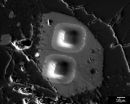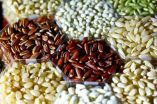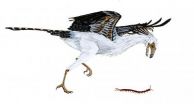(Press-News.org) This news release is available in German.
Lung cancer is a serious condition. Once patients are diagnosed with it, chemotherapy is often their only hope. But nobody can accurately predict whether or not this treatment will help. To start with, not all patients respond to a course of chemotherapy in exactly the same way. And then there's the fact that the systems drug companies use to test new medications leave a lot to be desired. "Animal models may be the best we have at the moment, but all the same, 75 percent of the drugs deemed beneficial when tested on animals fail when used to treat humans," explains Prof. Dr. Heike Walles, head of the Würzburg-based "Regenerative Technologies for Oncology" project group belonging to the Fraunhofer Institute for Interfacial Engineering and Biotechnology IGB.
These tests are set to achieve better results in the future: "We've developed an innovative 3D test system that allows us to superbly simulate what happens in the human body. Our plan is for this system to replace animal tests in the future," says Walles. Essentially what the researchers have done is to recreate the human lung in miniature – with a volume of half a cubic centimeter, each model is no bigger than a sugar cube. In a parallel effort, scientists at the Department of Bioinformatics at the University of Würzburg are working up computer simulation models for different patient groups. These are necessary because patients may have genetic variations that inhibit therapies from having the desired effect. Comparing the theoretical and biological models allows each research group to optimize their results.
The biological model is based human lung cancer cells growing on tissue. Thus an artificial lung is created. A bioreactor is used to make it breathe and to pump a nutrient medium through its blood vessels in the same way our bodies supply our lungs with blood. The reactor also makes it possible to regulate factors such as how fast and deeply the model lung breathes.
With the scientists having managed to construct the lung tissue, Walles is delighted to report that "treatments that generate resistance in clinics do the same in our model." Researchers are now planning to explore the extent to which their artificial lung can be used to test new therapeutic agents. Should resistance crop up during testing, doctors can opt to treat the patient with a combination therapy from the outset and thus side-step the problem. Thinking long-term, there is even the possibility of creating an individual model lung for each patient. This would make it possible to accurately predict which of the various treatment options will work. The required lung cells are collected as part of the biopsy performed to allow doctors to analyze the patient's tumor.
On the trail of metastases
Testing new medications is by no means the only thing the model lung can be used for. It is also designed to help researchers to better understand the formation of metastases; it is these that often make a cancer fatal. "As metastases can't be examined in animals – or in 2D models where cells grow only on a flat surface – we've only ever had a rough understanding of how they form. Now for the first time, our 3D lung tissue makes it possible to perform metastases analysis," explains Walles. "In the long term, this may enable us to protect patients from metastases altogether." In order to travel through the body, tumor cells alter their surface markers – in other words, the molecules that bind them to a particular area of the body. Cancer cells are then free to spread throughout the body via the body's circulatory system before taking up residence somewhere else by expressing their original surface markers. The scientists plan to use their model lung's artificial circulatory system to research exactly how this transformation occurs. And in doing so, they may someday succeed in developing medication that will stop metastases from forming in the first place.
INFORMATION: END
Artificial lung the size of a sugar cube
2014-05-28
ELSE PRESS RELEASES FROM THIS DATE:
Water in moon rocks provides clues and questions about lunar history
2014-05-28
A recent review of hundreds of chemical analyses of Moon rocks indicates that the amount of water in the Moon's interior varies regionally – revealing clues about how water originated and was redistributed in the Moon. These discoveries provide a new tool to unravel the processes involved in the formation of the Moon, how the lunar crust cooled, and its impact history.
This is not liquid water, but water trapped in volcanic glasses or chemically bound in mineral grains inside lunar rocks. Rocks originating from some areas in the lunar interior contain much more water ...
Ultraviolet cleaning reduces hospital superbugs by 20 percent: Study
2014-05-28
Washington, DC, May 27, 2014 – Healthcare-associated vancomycin-resistant enterococcus (VRE), methicillin-resistant Staphylococcus aureus (MRSA), Clostridium difficile (CD), and other multidrug-resistant organisms (MDRO) were decreased among patients after adding ultraviolet environmental disinfection (UVD) to the cleaning regimen, according to a study published in the June issue of the American Journal of Infection Control, the official publication of the Association for Professionals in Infection Control and Epidemiology (APIC).
In this retrospective study led by the ...
What can plants reveal about gene flow? That it's an important evolutionary force
2014-05-28
A plant breeder discovers his experimental crops have been "contaminated" with genes from a neighboring field. New nasty weeds sometimes evolve directly from natural crosses between domesticated species and their wild relatives. A rare plant is threatened due to its small population size and restricted range. What do all these situations have in common? They illustrate the important role of gene flow among populations and its potential consequences. Although gene flow was recognized by a few scientists as a significant evolutionary force as early as the 1940s, its relative ...
In Africa, STI testing could boost HIV prevention
2014-05-28
PROVIDENCE, R.I. [Brown University] — To maximize HIV prevention efforts in South Africa and perhaps the broader region, public health officials should consider testing for other sexually transmitted infections when they test for HIV, according to a new paper in the journal Sexually Transmitted Infections.
STIs can make HIV easier to transmit even after antiretroviral therapy has begun, so rooting out STI co-infections in patients should improve HIV prevention. The new study led by Brown University public health researchers emphasizes that sooner is indeed better than ...
Variety in diet can hamper microbial diversity in the gut
2014-05-28
AUSTIN, Texas — Scientists from The University of Texas at Austin and five other institutions have discovered that the more diverse the diet of a fish, the less diverse are the microbes living in its gut. If the effect is confirmed in humans, it could mean that the combinations of foods people eat can influence the diversity of their gut microbes.
The research could have implications for how probiotics and diet are used to treat diseases associated with the bacteria in human digestive systems.
A large body of research has shown that the human microbiome, the collection ...
Melting Arctic opens new passages for invasive species
2014-05-28
For the first time in roughly 2 million years, melting Arctic sea ice is connecting the north Pacific and north Atlantic oceans. The newly opened passages leave both coasts and Arctic waters vulnerable to a large wave of invasive species, biologists from the Smithsonian Environmental Research Center assert in a commentary published May 28 in Nature Climate Change.
Two new shipping routes have opened in the Arctic: the Northwest Passage through Canada, and the Northern Sea Route, a 3000-mile stretch along the coasts of Russia and Norway connecting the Barents and Bering ...
3,000 rice genome sequences made publicly available on World Hunger Day
2014-05-28
The open-access, open-data journal GigaScience (published by BGI and Biomed Central), announces today the publication of an article on the genome sequencing of 3000 rice strains along with the release of this entire dataset in a citable format in journal's affiliated open-access database, GigaDB. The publication and release of this enormous data set (which quadruples the current amount of publicly available rice sequence data) coincides with World Hunger Day to highlight one of the primary goals of this project— to develop resources that will aid in improving global food ...
High-status co-eds use 'slut discourse' to assert class advantage
2014-05-28
WASHINGTON, DC, May 27, 2014 — A new study suggests that high-status female college students employ "slut discourse" — defining their styles of femininity and approaches to sexuality as classy rather than trashy or slutty — to assert class advantage and put themselves in a position where they can enjoy sexual exploration with few social consequences.
"Viewing women only as victims of men's sexual dominance fails to hold women accountable for the roles they play in reproducing social inequalities," said lead author Elizabeth A. Armstrong, an associate professor of sociology ...
Prehistoric birds lacked in diversity
2014-05-28
Birds come in astounding variety—from hummingbirds to emus—and behave in myriad ways: they soar the skies, swim the waters, and forage the forests. But this wasn't always the case, according to research by scientists at the University of Chicago and the Field Museum.
The researchers found a striking lack of diversity in the earliest known fossil bird fauna (a set of species that lived at about the same time and in the same habitat). "There were no swans, no swallows, no herons, nothing like that. They were pretty much all between a sparrow and a crow," said Jonathan ...
Cod bones reveal 13th century origin of global fish trade
2014-05-28
London's international fish trade can be traced back 800 years to the medieval period, according to new research published today in the journal Antiquity.
The research, led by archaeologists from UCL, Cambridge and UCLan, provides new insight into the medieval fish trade and the globalisation of London's food supply.
Archaeologists analysed data from nearly 3,000 cod bones found in 95 different excavations in and around London. They identified a sudden change in the origin of the fish during the early 13th century, indicating the onset of a large-scale import trade.
Lead ...





